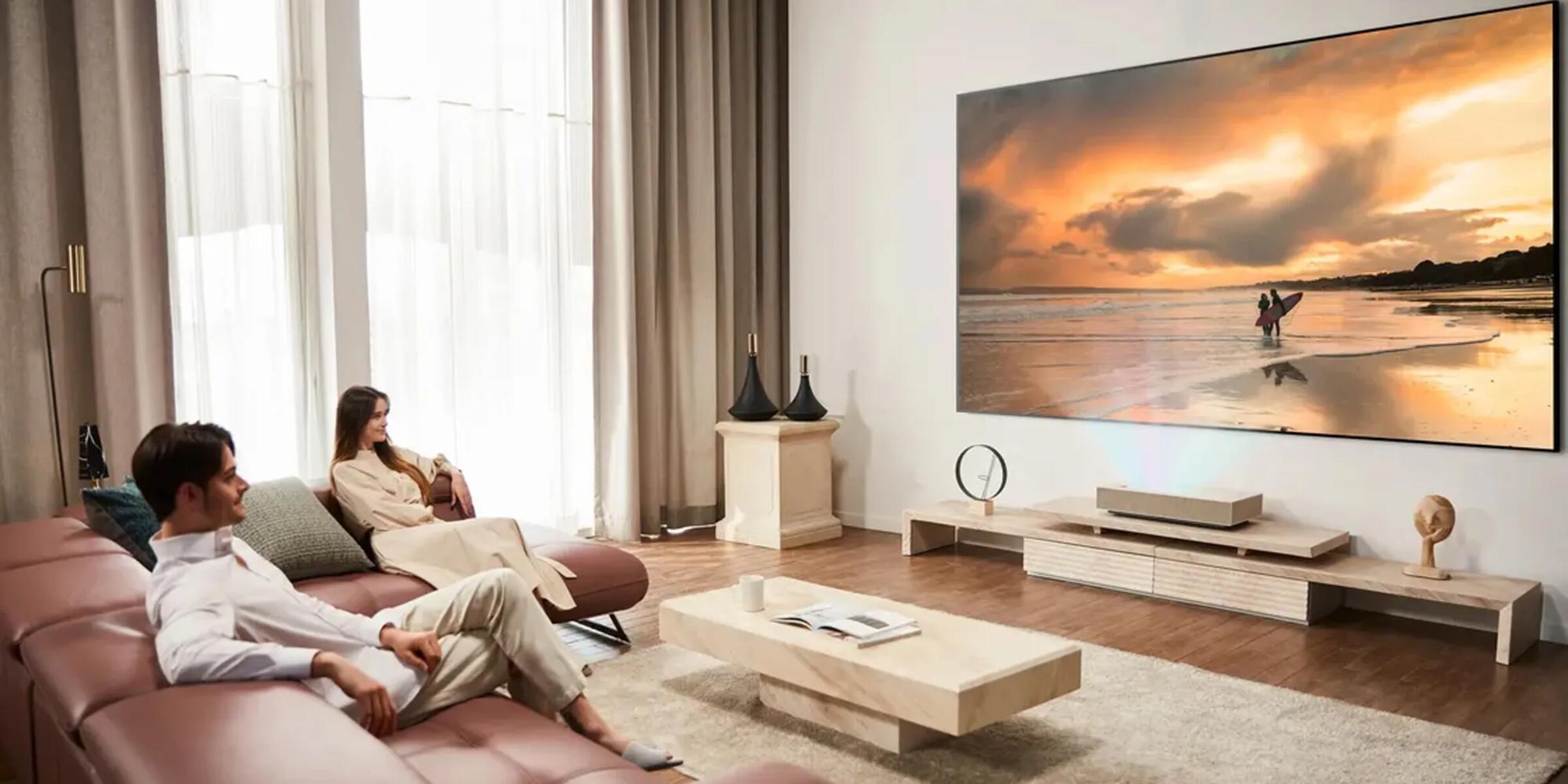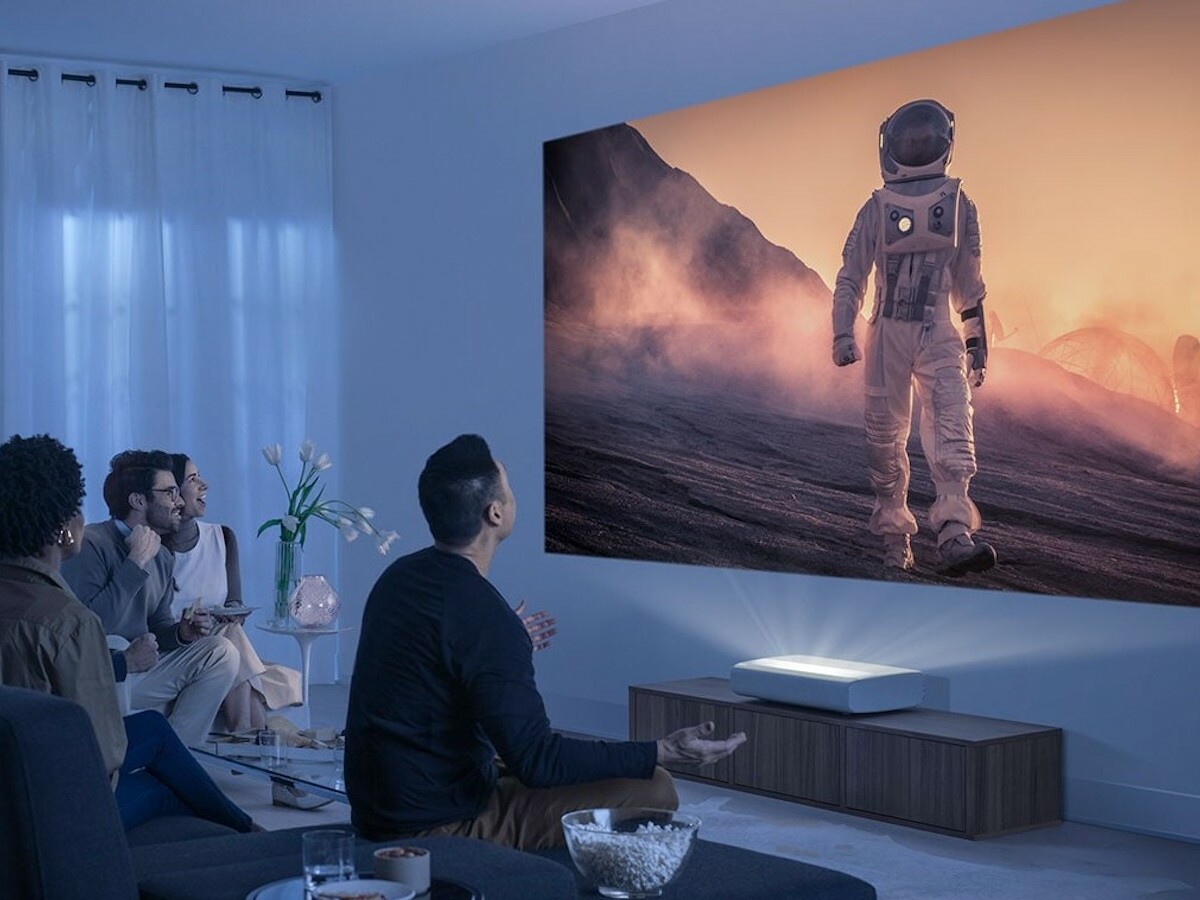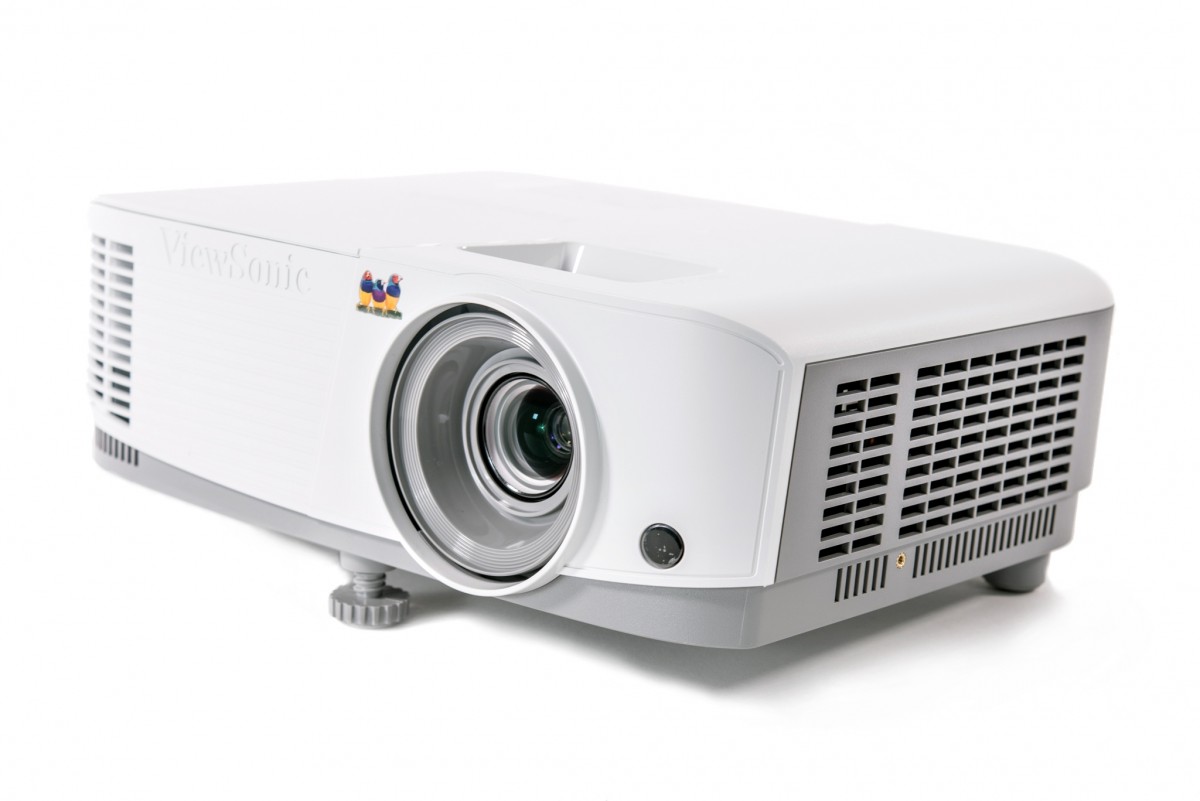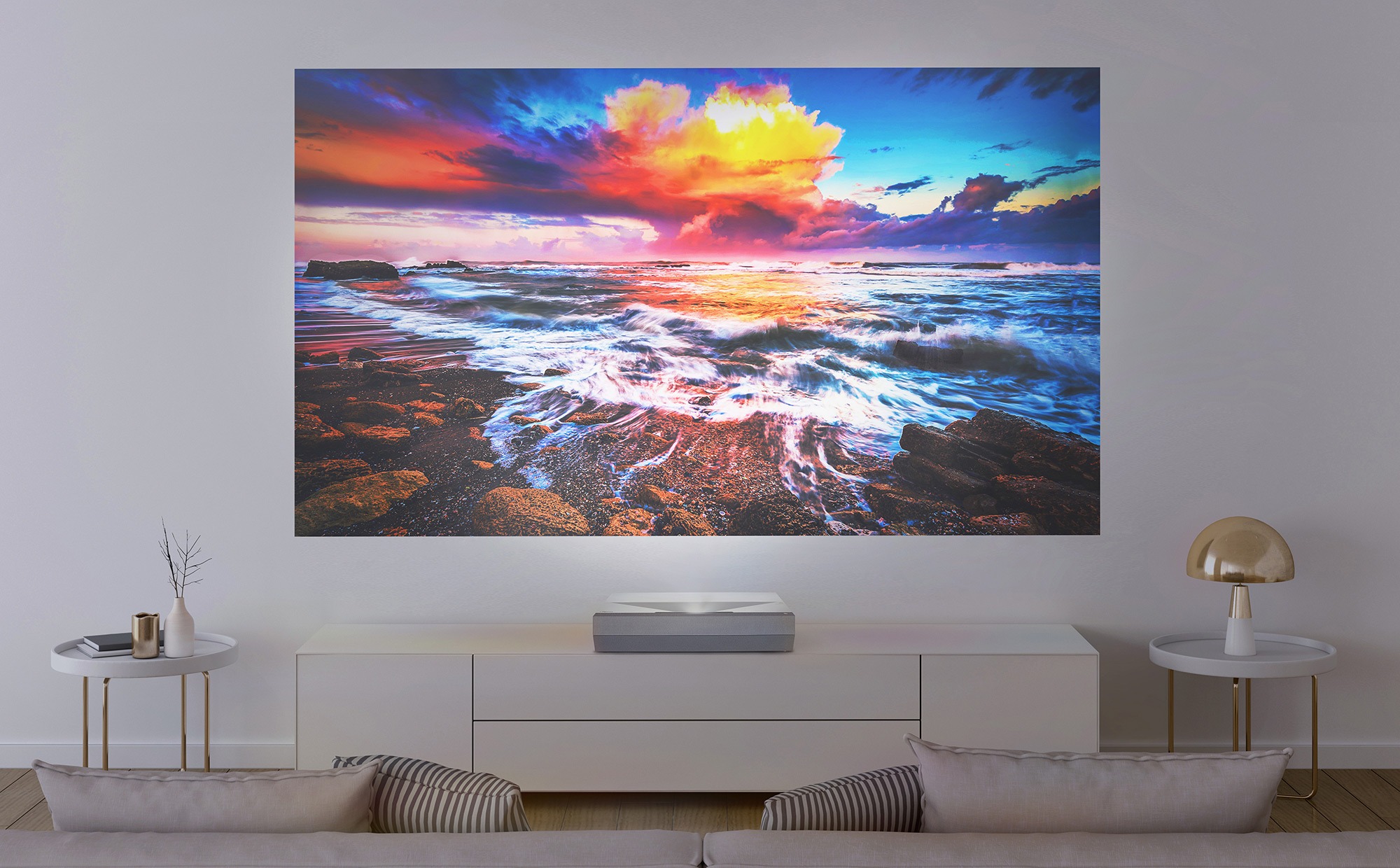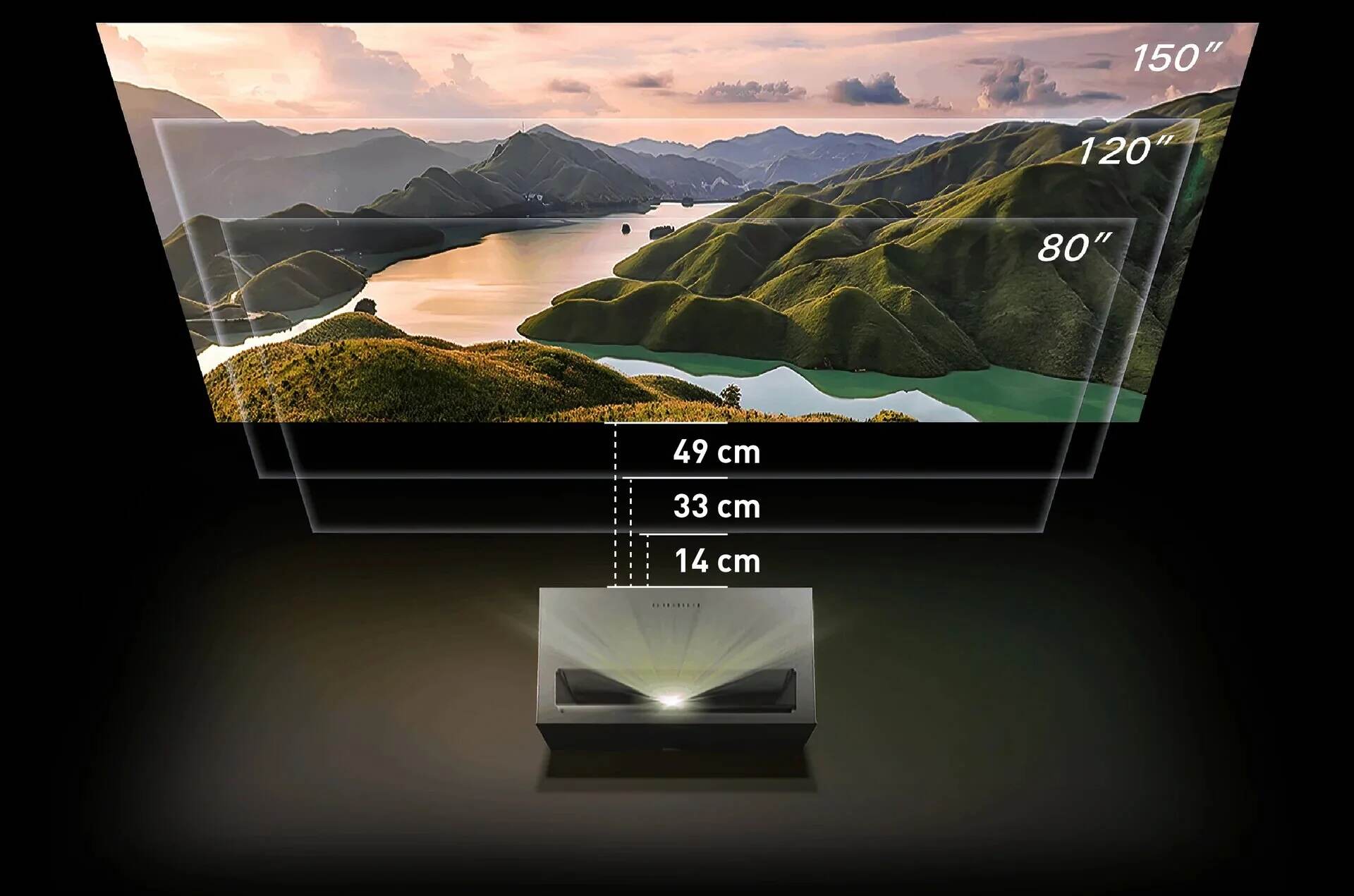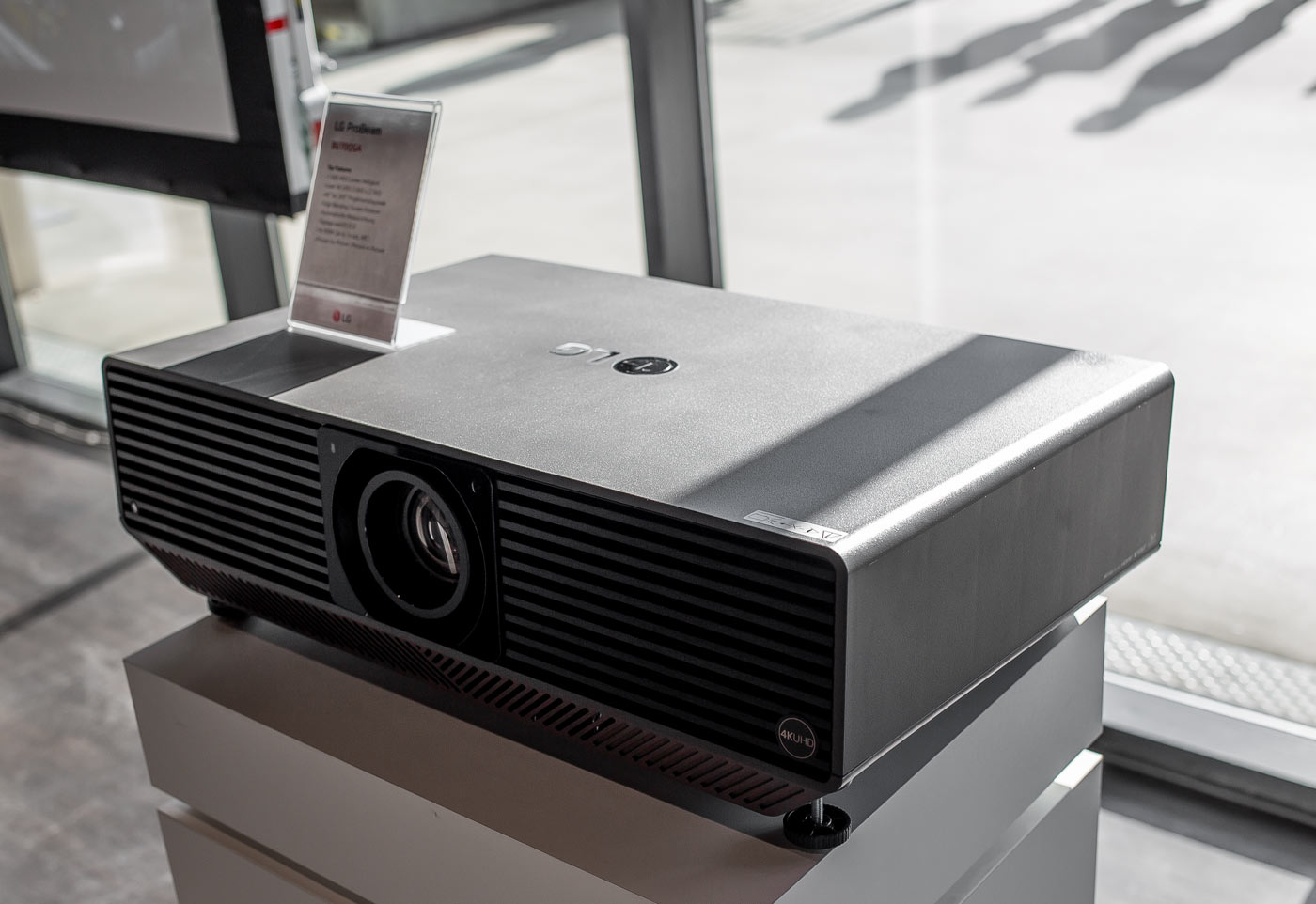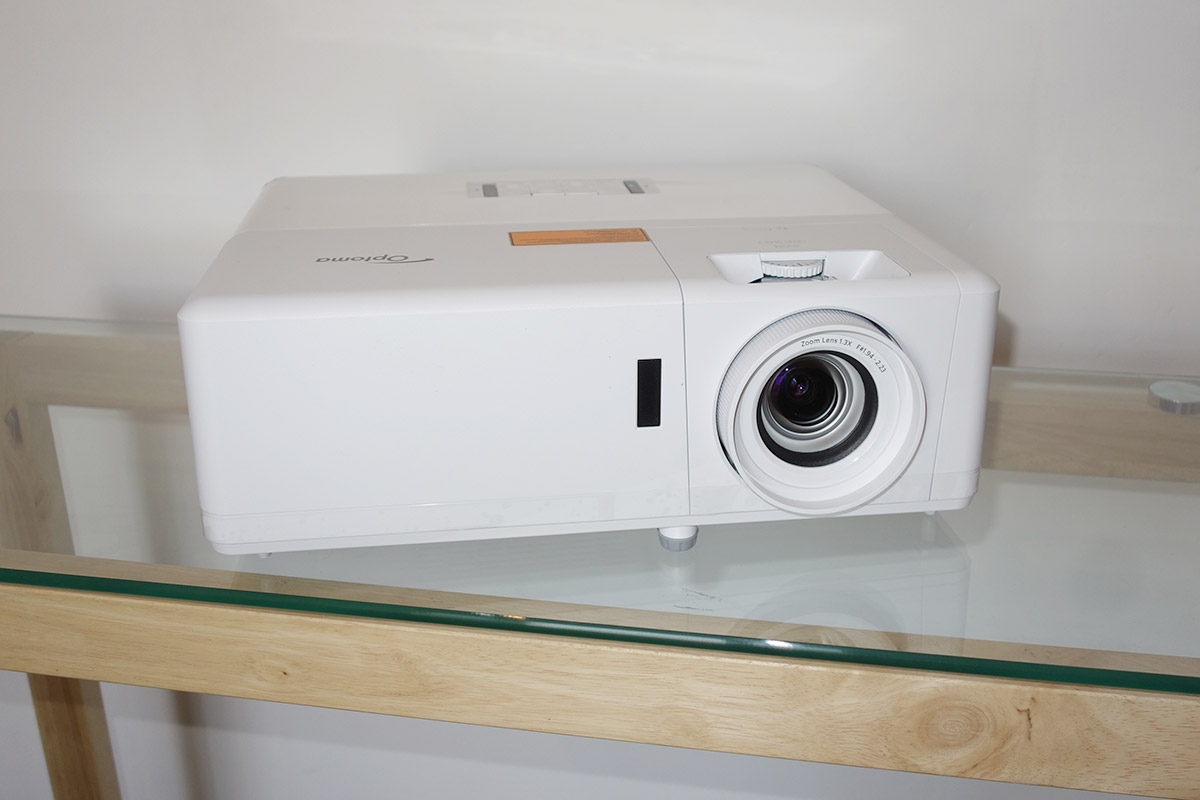Introduction
A short throw projector is a device used to display images, videos, or presentations on a screen or other flat surfaces. It is specifically designed to project a large image from a short distance. Unlike traditional projectors that require a significant distance between the projector and the screen to produce a large image, a short throw projector can be placed closer to the screen, making it ideal for smaller rooms or spaces with limited throw distances.
With advancements in technology, short throw projectors have become increasingly popular in recent years, providing users with a convenient and flexible way to project high-quality visuals. Whether you’re a business professional delivering presentations, a home theater enthusiast, or an educator conducting interactive lessons, a short throw projector can offer numerous benefits and enhance your viewing experience.
In this article, we will delve into the details of what a short throw projector is, how it works, its benefits, factors to consider when choosing one, setting it up, limitations, and popular models available on the market. By the end, you’ll have a better understanding of what a short throw projector is and whether it suits your specific needs.
What is a Short Throw Projector?
A short throw projector is a type of projector that is designed to project a large image from a short distance. It uses a shorter throw ratio, which is the ratio between the distance from the projector to the screen and the width of the projected image. Traditional projectors typically require a larger throw distance to produce a large image, whereas a short throw projector can be placed closer to the screen, allowing for a larger image to be displayed even in small or confined spaces.
Short throw projectors often have throw ratios of 0.5:1 or less, meaning that for every foot of distance from the screen, they can display up to twice the width of the image. This makes them ideal for use in classrooms, meeting rooms, home theaters, and other environments where space is limited.
One of the key features of a short throw projector is its ability to minimize the casting of shadows on the screen. This is particularly beneficial for presenters or educators who need to interact with the projected content without obstructing the image. It also reduces the risk of being blinded by the projector’s light, as the device is positioned closer to the screen and above the presenter’s line of sight.
Short throw projectors can utilize various technologies such as DLP, LCD, or LCoS to generate images. They often have high resolutions, ranging from Full HD (1080p) to 4K Ultra HD, ensuring crisp and clear visuals. Many models also offer features such as keystone correction to adjust the image distortion caused by the angle of the projector, as well as lens shift to fine-tune the position of the image on the screen.
Overall, a short throw projector offers a convenient and space-saving solution for projecting large images in tight spaces. Its ability to reduce shadow interference and provide flexibility in positioning make it an attractive choice for businesses, educational institutions, and home theater enthusiasts.
How Does a Short Throw Projector Work?
A short throw projector uses advanced optics and innovative design to project a large and clear image from a short distance. The key components that enable the functionality of a short throw projector include the lens system, mirrors, and imaging technology.
The lens system of a short throw projector is specifically designed to focus the light coming from the projector’s lamp onto the screen. The lens has a shorter focal length compared to traditional projectors, allowing it to project a larger image from a shorter distance. This means that the projector can be placed closer to the screen without sacrificing image size or quality.
In addition to the lens system, short throw projectors may utilize mirrors to redirect and manipulate the light path. These mirrors help to shorten the throw distance by reflecting the light in a different direction. By redirecting the light, the projector can create a larger image even when positioned close to the screen.
Short throw projectors also incorporate advanced imaging technology such as DLP (Digital Light Processing), LCD (Liquid Crystal Display), or LCoS (Liquid Crystal on Silicon). These technologies work by modulating the light to produce the desired image. DLP projectors use micro mirrors that switch on and off rapidly to reflect or block the light, creating the image. LCD projectors use liquid crystal panels to selectively filter the light and create the image. LCoS projectors use liquid crystals on a reflective silicon chip to control the light and generate the image.
Once the image is created by the imaging technology, it is projected onto the screen. The quality of the image is determined by various factors, including the resolution of the projector, the brightness of the lamp, and the contrast ratio. Short throw projectors often have high-resolution capabilities, allowing for detailed and sharp visuals. They also typically have powerful lamps to ensure bright and vibrant colors, even in well-lit environments. The contrast ratio determines the difference between the darkest and brightest parts of the image, enhancing the overall visual experience.
In summary, a short throw projector works by utilizing a specialized lens system, mirrors, and advanced imaging technology to project a large and clear image from a short distance. Its innovative design allows for flexible placement options in small spaces, making it a versatile choice for various applications.
Benefits of a Short Throw Projector
Short throw projectors offer several advantages over traditional projectors, making them a popular choice for both personal and professional use. Here are some key benefits:
- Space-saving design: One of the primary benefits of a short throw projector is its ability to project a large image from a short distance. With a shorter throw ratio, it can be positioned closer to the screen, eliminating the need for a large open space. This makes it ideal for small rooms or areas where space is limited.
- Reduced shadow interference: By being placed closer to the screen, short throw projectors minimize the casting of shadows on the projected content. This is advantageous for presenters, educators, or anyone else interacting with the image, as it prevents obstruction and helps maintain a clear and uninterrupted view of the material.
- Less risk of glare: Traditional projectors positioned far from the screen can sometimes cause glare or interfere with the presenter’s line of sight. Short throw projectors, on the other hand, are typically elevated above eye level, reducing the chance of direct light hitting the viewer’s eyes.
- Flexible placement options: Short throw projectors provide more flexibility in terms of placement. They can be mounted on a ceiling mount or placed on a table or shelf, depending on the user’s preference. This versatility makes them suitable for various environments, including classrooms, meeting rooms, home theaters, and small living spaces.
- Improved image quality: Short throw projectors often offer high resolutions, ranging from Full HD (1080p) to 4K Ultra HD, ensuring crisp and detailed visuals. They also typically have powerful lamps and high contrast ratios, resulting in bright and vibrant colors, even in well-lit rooms.
- Enhanced viewing experience: With their ability to project large images at a close distance, short throw projectors create an immersive viewing experience. Whether you’re watching movies, gaming, or delivering presentations, the larger image size enhances engagement and offers a more captivating visual experience.
In addition to these benefits, short throw projectors are generally more convenient to set up and require less maintenance compared to traditional projectors. Their compact size and portability make them easy to transport, enabling you to enjoy a big-screen experience wherever you go.
Overall, the space-saving design, reduced shadow interference, flexible placement options, improved image quality, and enhanced viewing experience make short throw projectors a popular choice for those seeking a practical and high-quality projection solution.
Factors to Consider when Choosing a Short Throw Projector
When selecting a short throw projector, it’s essential to consider several factors to ensure that you choose a projector that meets your specific needs and preferences. Here are some key factors to consider:
- Throw distance: Determine the throw distance you require based on your room or space constraints. Measure the distance between the projector and the screen and consider the projector’s throw ratio to ensure it can generate the desired image size from that distance.
- Image quality: Consider the resolution, brightness, and contrast ratio of the projector. Higher resolutions such as Full HD (1080p) or 4K Ultra HD will provide sharper and more detailed images. Opt for projectors with higher brightness if you plan to use them in well-lit environments. A high contrast ratio will enhance the difference between dark and bright areas of the image.
- Connectivity options: Check the available connectivity options on the projector. Ensure that it has the necessary ports (HDMI, VGA, USB, etc.) to connect with your desired devices, such as laptops, gaming consoles, or streaming devices.
- Keystone correction: Consider whether the projector offers keystone correction. This feature allows you to adjust the image distortion caused by the projector’s angle, ensuring a properly aligned and rectangular image even if the projector is not placed at the ideal position.
- Zoom capability: Some short throw projectors offer zoom capabilities, enabling you to adjust the size of the image without physically moving the projector. This can be useful if you require flexibility in the size of the projected image.
- Throw ratio and screen size: Understand the throw ratio and the maximum screen size that the projector can accommodate. This will help you determine the optimal placement and ensure the projector can deliver the desired screen size within your available space.
- Mounting options: Consider the mounting options for the projector. Check if it supports ceiling mounting or if it can be placed on a table or shelf. This will depend on your preference and the layout of your space.
- Price and brand: Set a budget and research different brands and models within your price range. Compare specifications, read reviews, and consider the reputation of the brand to ensure you choose a reliable and well-performing projector.
By considering these factors, you can make an informed decision and select a short throw projector that suits your requirements, offering optimal image quality, connectivity options, and convenient placement.
Setting up a Short Throw Projector
Setting up a short throw projector requires careful planning and consideration to achieve the best performance and optimal viewing experience. Here are the key steps to follow when setting up a short-throw projector:
- Choose the right location: Select a suitable location for your projector, keeping in mind the desired screen size and throw distance. Ensure that the placement allows for proper ventilation and access to power outlets.
- Prepare the screen: Set up a projection screen or use a blank white wall in the designated viewing area. Ensure that the screen is clean and free of any obstructions that may affect image quality.
- Connect the necessary cables: Connect the short throw projector to your video source (e.g., laptop, Blu-ray player) using the appropriate cables (e.g., HDMI, VGA). Ensure that both the projector and the video source are powered off before making any connections.
- Adjust the projector’s position: Place the projector on a stable surface or mount it securely on the ceiling, depending on the options your projector supports. Use the adjustable legs or mounting hardware to position the projector at the correct height and angle.
- Align the projector: Adjust the projector’s position and keystone correction to align the projected image squarely on the screen. Use the projector’s on-screen menu or remote control to fine-tune the image settings and ensure a rectangular and distortion-free projection.
- Fine-tune the focus and zoom: Use the projector’s focus and zoom controls to achieve a sharp and clear image. Adjust the focus ring until the image appears crisp, and use the zoom feature if you need to adjust the size of the projected image.
- Configure audio settings: If your projector has built-in speakers or audio output ports, connect external speakers or sound systems for enhanced audio quality. Adjust the volume settings to ensure the audio is balanced and clear during your presentations or movie screenings.
- Test and optimize: Power on the projector and your video source, and project an image onto the screen. Take the time to evaluate the image quality, brightness, and color accuracy. Make any necessary adjustments to the projector’s settings to achieve the desired image quality.
By following these steps and taking the time to properly set up your short throw projector, you can ensure optimal performance and enjoy a seamless projection experience.
Limitations of a Short Throw Projector
While short throw projectors offer many benefits, they also have a few limitations that you should be aware of when considering their use. Some of the potential drawbacks of short throw projectors include:
- Limited throw distance: Short throw projectors are designed to be used in smaller spaces with limited throw distances. If you require a large screen size in a bigger room, a short throw projector might not be suitable. In such cases, a regular or long throw projector may be a better choice.
- Size limitations: Short throw projectors typically cannot project extremely large screen sizes. The maximum screen size they can accommodate is limited by their throw ratio. If you need a significantly larger screen, you may need to consider other projection options.
- Image distortion: Short throw projectors may experience some image distortion, especially if the projector is not properly aligned or the keystone correction is not adjusted correctly. This can lead to a slightly distorted or non-rectangular image. However, most projectors have built-in keystone correction features to help minimize this issue.
- Less flexibility in placement: While short throw projectors offer more flexibility compared to traditional projectors, they still have limitations in terms of placement. They require a specific positioning and distance from the screen to produce the desired image size and avoid distortion. This may limit your options for mounting or placement within a room.
- Potential for shadows and obstruction: In some cases, the placement of the short throw projector may still lead to shadows if there are obstacles between the projector and the screen. It’s important to consider the positioning of furniture, people, or other objects that may cause shadows or obstruct the projected image.
- Pricing: Short throw projectors can be more expensive than traditional projectors due to their specialized design and optics. However, prices have become more affordable in recent years as technology has advanced and more options have become available.
- Lamp maintenance: Like any projector, short throw projectors have lamps that will eventually need replacement. Lamp life can vary, but it’s important to factor in the cost and convenience of lamp replacement when considering a short throw projector.
Understanding these limitations will help you make an informed decision about whether a short throw projector is the right choice for your needs. By weighing the benefits against the limitations, you can determine if a short throw projector aligns with your specific requirements and budget.
Popular Short Throw Projectors on the Market
There are several short throw projectors available on the market, each offering unique features and specifications to cater to different needs and budgets. Here are a few popular short throw projectors:
- Epson PowerLite 535W: This projector offers a short throw ratio and high brightness, making it suitable for classrooms and small meeting spaces. It boasts a WXGA resolution and advanced connectivity options for seamless integration with various devices.
- BenQ MW632ST: Ideal for both multimedia presentations and home entertainment, this projector combines a short throw ratio with good brightness and versatile connectivity options. It offers a full HD resolution and a built-in speaker for enhanced audio performance.
- Optoma EH412ST: This short throw projector is designed for professional presentations in small to medium-sized rooms. It features a bright and vibrant image, high resolution, and multiple connectivity options. It also offers vertical lens shift for easy installation and placement flexibility.
- ViewSonic PX706HD: This home theater projector delivers high-quality entertainment with its full HD resolution, vibrant colors, and short throw capabilities. It features a low input lag, making it an excellent choice for gamers looking for an immersive gaming experience.
- LG HF65LA: This ultra-short throw projector offers a compact and portable design, making it suitable for small spaces. It provides a full HD resolution, wireless connectivity, and a built-in battery for added convenience. Its LED lamp technology ensures long-lasting and energy-efficient performance.
- Sony VPL-VZ1000ES: This ultra-short throw laser projector delivers stunning 4K HDR image quality. With its advanced laser light source, it offers a long lifespan and virtually maintenance-free operation. It is perfect for creating a cinematic experience in a dedicated home theater room.
These are just a few examples of popular short throw projectors available in the market. When selecting a projector, consider factors such as image quality, brightness, resolution, connectivity options, and budget. It is also recommended to read reviews and compare the features and specifications of different models to determine the best fit for your specific needs.
Conclusion
Short throw projectors offer a convenient and space-saving solution for projecting high-quality images in smaller rooms or spaces with limited throw distances. They provide several benefits, including reduced shadow interference, less risk of glare, and flexibility in placement options. Short throw projectors are available with various features, resolutions, and connectivity options, making them suitable for a range of applications, from educational settings to home theaters.
When choosing a short throw projector, it’s important to consider factors such as throw distance, image quality, connectivity options, and mounting options. Take into account the size of your space, the screen size you desire, and the specific requirements of your intended use. Comparing different models, reading reviews, and understanding the limitations of short throw projectors will help you make an informed decision.
In summary, short throw projectors provide a practical and efficient way to project large images in tight spaces. Their innovative design and advanced technology enhance the viewing experience, whether you’re delivering presentations, watching movies, or gaming. With the right short throw projector, you can enjoy immersive visuals and create engaging and impactful presentations or entertainment experiences.







